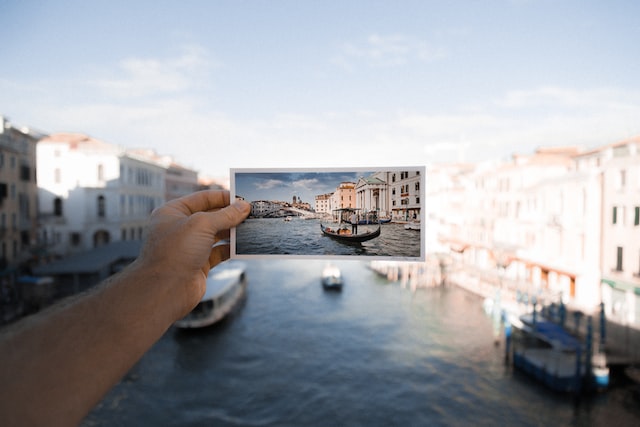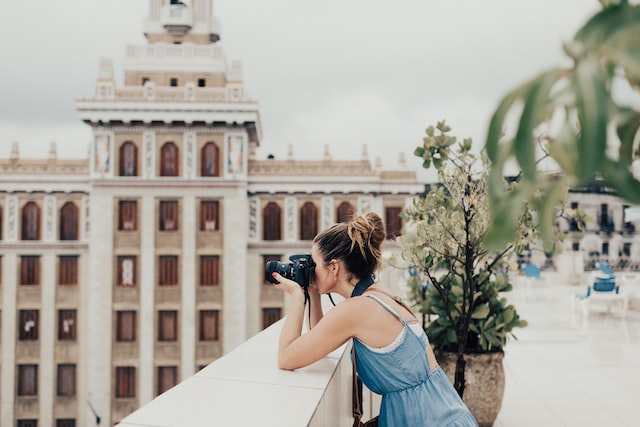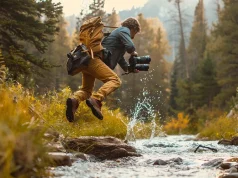
A great approach to preserving memories and communicating your experiences to others is through travel photography. There are a number of techniques you may employ, regardless of your level of experience, to take the best trip pictures. Here are five key tactics to help you sharpen your photography techniques and produce beautiful trip photos.
Research your destination
An important part of getting ready for your travel photography excursion is researching your destination. You can better organize your trip and find the greatest photo chances if you are aware of what to anticipate. Check your destination’s weather and seasons beforehand because they might have a big impact on the lighting and mood of your images. For instance, you might need to change your expectations and pack the proper attire if you’re traveling during the winter or rainy season. Visit Cliche Magazine and read more articles about travel photography and how you can get ready to take the best photos wherever you go.
Moreover, make sure you respect the locals and their beliefs by learning about the cultural norms and practices of your destination. For instance, certain nations might have rigid clothing codes or might forbid photography in specific locations, including government buildings or religious sites. You can find this information by interviewing locals or travel agencies, reading travel blogs, online forums, or travel guides.
Choose the right equipment

Possessing the correct tools is crucial for taking beautiful trip pictures. Even though smartphones may take beautiful pictures, buying a decent camera will give you more creative control and deliver superior image quality. Landscape and architectural photography is best done with a DSLR or mirrorless camera and a wide-angle lens, while details and people can be captured with a telephoto lens. To stabilize your camera and prevent camera shaking or blur, especially in low-light situations, think about buying a tripod.
To avoid running out of power or storage capacity, you might also require extra batteries and memory cards in addition to the camera and lens. Include protective clothing, such as a waterproof case or lens cover, if you’re visiting a place with a tough environment, such as a desert or rainforest, to keep your equipment safe.
Master composition and lighting
Two crucial aspects of photography that may make or break your pictures are composition and lighting. Composition is the process of positioning the elements in your photo to produce a balanced and aesthetically acceptable image. Use leading lines, framing, and the rule of thirds to give the scene depth and direct the viewer’s eye.
Another important factor that has an impact on the tone and mood of your photographs is lighting. Employ artificial light, such as flash or reflectors, to add depth and texture to your photographs, or use natural light, such as the golden hour (the period just after sunrise or before sunset), to produce a warm and soft look. The intense midday light should be avoided because it can produce sharp shadows and overexposed areas.
Tell a story
The goal of travel photography is to convey a story and capture the character of the locations you visit, not just to take beautiful photographs. Go deeper than the surface to capture the feelings, people, and culture of your location if you want to take a compelling vacation picture. Focus on the little things that make a location special, such as street art, food, or traditional crafts, and take candid photos of the inhabitants and the activity on the streets.
Try to develop a narrative or topic that connects your shots in order to tell a tale through your photography. For instance, you could concentrate on a specific shade, form, or object that is noticeable at your location, or you could take a number of pictures that highlight the contrast between the old and the modern, the rural and the urban, or the natural and the artificial.
Practice, experiment, and have fun

Photography involves practice, perseverance, and experimenting, just like any other skill. Go outside of your comfort zone, try new things, and don’t be scared to fail. Use the many surroundings, weather, and lighting patterns you come across when traveling to improve your photography.
Control the exposure and depth of field of your images by adjusting the camera’s shutter speed, aperture, and ISO settings. Use different lightroom presets and look into post-processing software like Lightroom or Photoshop to experiment with improving the colors, contrast, and sharpness of your pictures. Go for a genuine and natural appearance that captures the spirit and ambiance of your place, but avoid going overboard.
In the end, remember to enjoy and have fun while capturing trip images. Avoid obsessing over shooting flawless pictures and instead concentrate on observing and appreciating the world’s diversity and beauty. Always keep in mind that the best trip pictures aren’t just about the technical details; they’re also about the feelings and memories they arouse!





